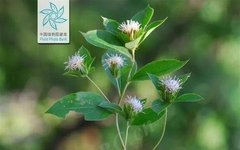Unhealthy dietary habits, living environments, and behaviors can lead to the accumulation of dampness in the body. This is especially true during the hot summer months when people indulge in cold drinks, spend long hours in air conditioning, and take cold showers. Additionally, living in a humid environment, getting caught in the rain, prolonged sitting, and lack of sleep can all contribute to external dampness entering the body. Once external dampness infiltrates the human body, it can affect the functions of the five internal organs, leading to symptoms of spleen and stomach deficiency, which in turn affects food digestion and absorption, resulting in poor appetite.
 Today, we will explore a sacred herb that dries dampness and strengthens the spleen—Cang Zhu!
Today, we will explore a sacred herb that dries dampness and strengthens the spleen—Cang Zhu!
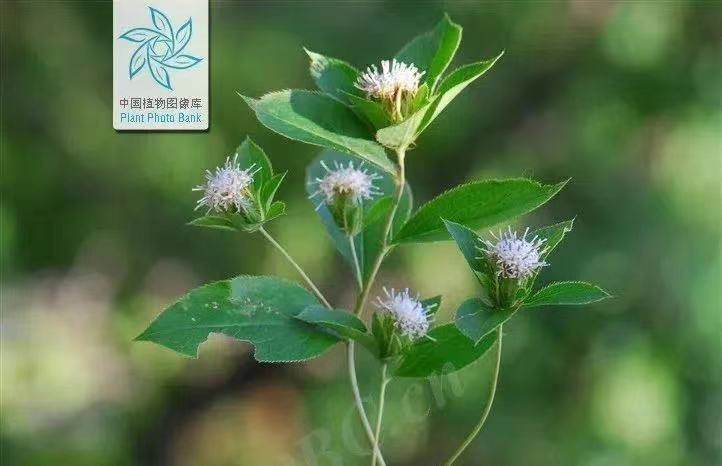

 Before discussing Cang Zhu, let us first understand the term “Zhu”.
Before discussing Cang Zhu, let us first understand the term “Zhu”.
“Zhu” is first mentioned in the “Erya”: “Zhu, mountain chrysanthemum.” Cang Zhu was first recorded as a medicinal material in the “Shennong Bencao Jing”, classified as a superior herb. However, before the Han Dynasty, the term “Zhu” was used interchangeably without distinguishing between Bai Zhu (White Atractylodes) and Cang Zhu. It was not until the Southern and Northern Dynasties that Tao Hongjing in the “Bencao Jing Jizhu” proposed: “There are two types of Zhu: Bai Zhu has large hairy leaves and branches, with sweet roots and little oil, suitable for making pills and powders. Chi Zhu has fine leaves without branches, with small bitter roots and oil, suitable for decoction.” The Song Dynasty’s “Bencao Yanyi” states: “Cang Zhu is as long as a finger, plump, with brown skin, and has a pungent taste… Bai Zhu is coarse, slightly brown, with a mild bitter taste that is not pungent.” The Qing Dynasty’s “Bencao Chongyuan” states: “To tonify the spleen, use Bai Zhu; to promote spleen function, use Cang Zhu. If both tonification and promotion are needed, use them in combination. If tonifying is more than promoting, use more Bai Zhu and less Cang Zhu; if promoting is more than tonifying, use more Cang Zhu and less Bai Zhu. Although they are two types, they are essentially one.” In fact, Bai Zhu and Cang Zhu have similar yet distinct properties and applications, and clinical differentiation is necessary for their use.
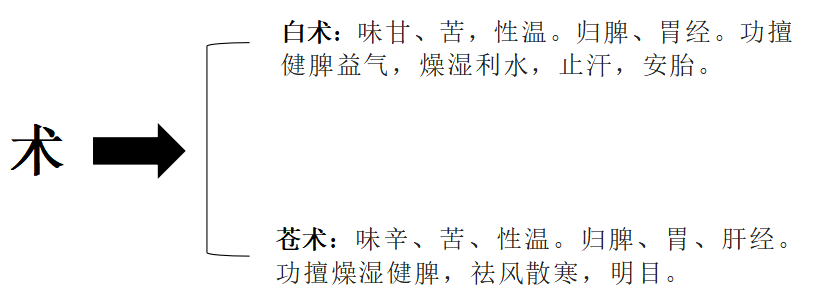
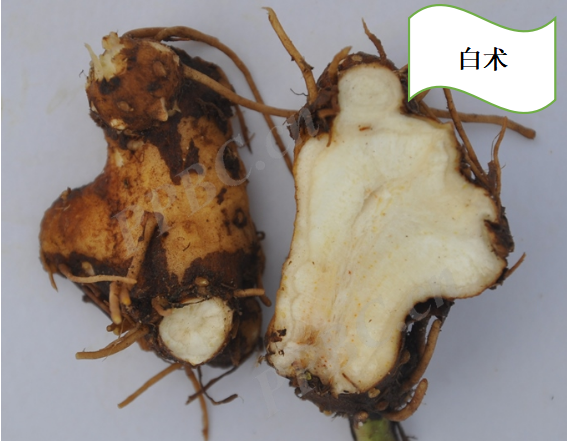
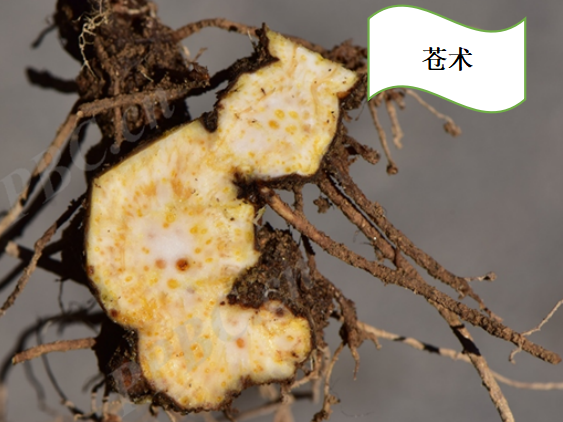
Both herbs have the effect of strengthening the spleen and drying dampness, and can be used to treat damp obstruction in the middle jiao, leading to spleen dysfunction. However, Bai Zhu primarily strengthens the spleen and benefits qi, making it a key herb for tonifying the spleen, suitable for those with spleen deficiency and dampness; Cang Zhu primarily has a bitter, warming, and damp-drying effect, making it a key herb for promoting spleen function, suitable for those with internal dampness obstruction leaning towards excess. Additionally, Bai Zhu has diuretic, sweat-stopping, and fetal calming effects. It is commonly used to treat spleen deficiency with edema, spleen and lung qi deficiency, weak defensive qi, spontaneous sweating, susceptibility to wind pathogens, and fetal restlessness due to spleen deficiency. Cang Zhu also has the effects of inducing sweating, releasing the exterior, dispelling wind-dampness, and improving vision. It is commonly used to treat wind-cold with dampness in the exterior, wind-damp bi syndrome, night blindness, and blurred vision.


The Botanical Source of Cang Zhu


The medicinal source of Cang Zhu is the dried rhizome of the Asteraceae plant Atractylodes lancea (Thunb.) DC. or Atractylodes chinensis (DC.) Koidz. Morphologically, Cang Zhu is a perennial herb of the Atractylodes genus in the Asteraceae family. Due to transitional and unstable variations, the leaf morphology of Cang Zhu varies greatly, leading to classification confusion. The Atractylodes lancea from the Maoshan area (belonging to Jiangsu) is considered a genuine medicinal material, also known as southern Cang Zhu.
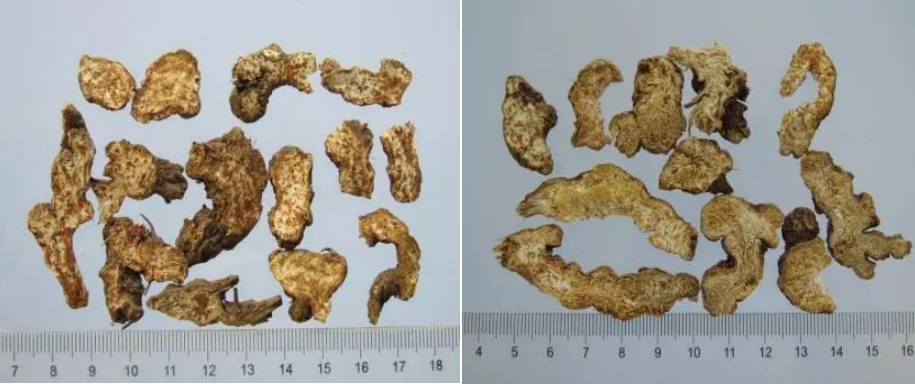
Cang Zhu is a multi-source traditional Chinese medicine. The 2020 edition of the “Chinese Pharmacopoeia” records that the source of Cang Zhu is the dried rhizome of the perennial herb Atractylodes lancea or Atractylodes chinensis. This means that both Atractylodes lancea and Atractylodes chinensis are authentic sources of Cang Zhu.
However, the authentic production area of Cang Zhu is Maoshan in Jiangsu, where Atractylodes lancea is considered a genuine medicinal material. Genuine medicinal materials refer to regional herbs that have high yield, good quality, and superior processing. In recent years, due to the increasing demand for Cang Zhu, the supply of Atractylodes lancea has not met the demand. Atractylodes chinensis, produced in Hebei and Inner Mongolia, has a larger production area and higher yield, thus becoming the mainstream product in the market.
Next, let’s introduce some related terminology for Cang Zhu:1. Oil Chamber
The oil chamber is a secretion cavity in the plant, slightly round in shape, containing a large amount of volatile oil, which is the main material basis for the efficacy of Cang Zhu.
The color of the volatile oil varies, which is related to the duration of its formation. Mature oil chambers differ in color from those in the formation stage (secretion cell cluster stage).The number of oil chambers increases with the age of Cang Zhu, with the oil content of three-year-old and older rhizomes being 1-3 times or more than that of one-year-old rhizomes.
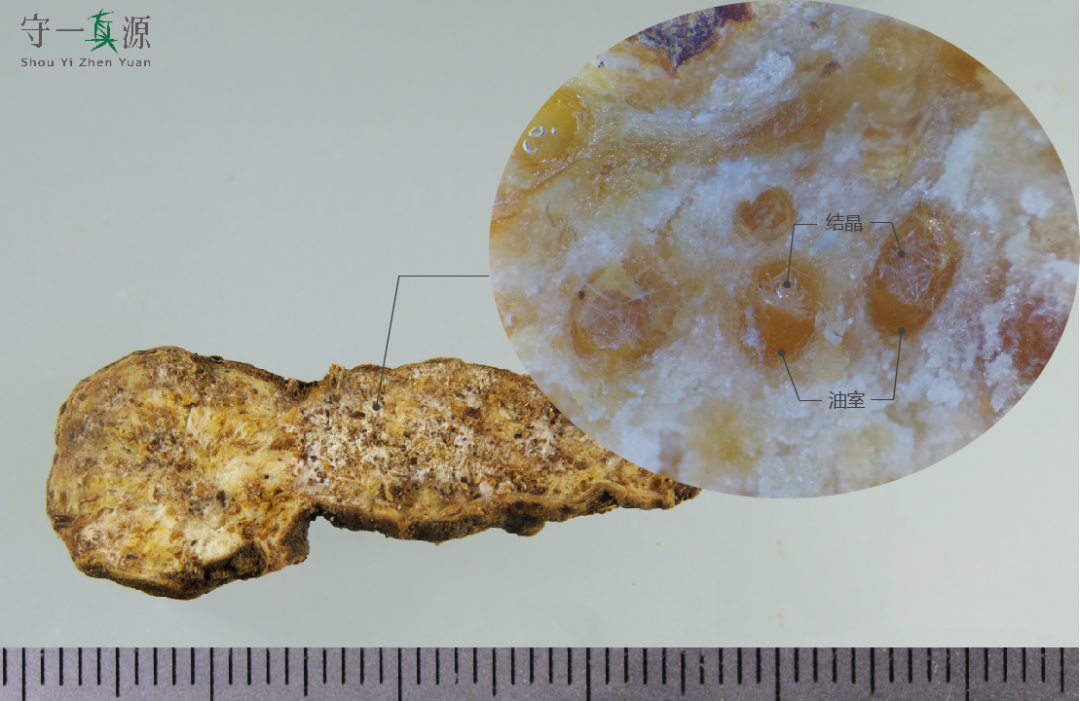
2. Vermilion Dot
The small reddish-brown dots on the cross-section of Cang Zhu, which contain volatile oil in the oil chambers, are referred to as “vermilion dots”.
3. Frost Formation
The phenomenon of needle-like crystalline substances precipitating from the volatile oil in the oil chamber of Atractylodes lancea is called “frost formation”.
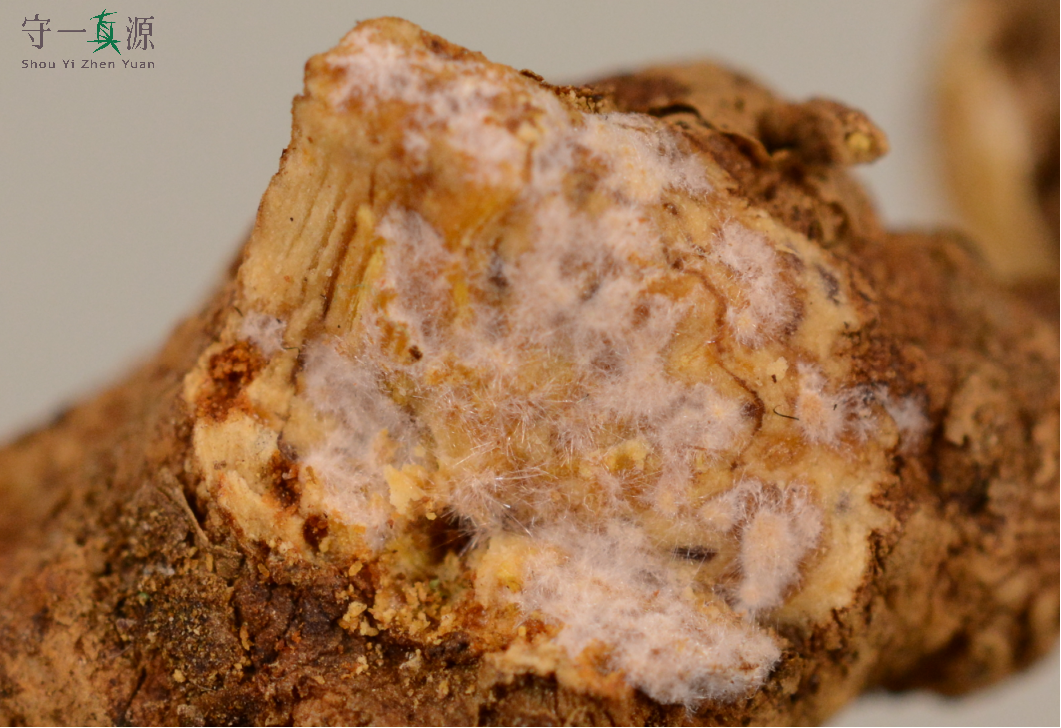
When Atractylodes lancea is cut open, the cross-section shows orange-red oil spots, commonly referred to as “vermilion dots”. When exposed to air, the cross-section will precipitate white needle-like crystals, commonly referred to as “frost formation”. Atractylodes lancea has a strong aroma; Atractylodes chinensis also has yellow-brown oil spots on the cross-section but does not exhibit the “frost formation” phenomenon, and its aroma is slightly milder than that of Atractylodes lancea. Therefore, the presence or absence of the “frost formation” phenomenon is a significant distinction between Atractylodes lancea and Atractylodes chinensis. It is generally believed that Atractylodes lancea is of better quality, but in fact, the differences in composition between the two are not significant. Some studies have conducted fingerprint analysis of the two contrasting medicinal materials and found a similarity of up to 98%, indicating that the content of various components in both varieties of Cang Zhu is very close.
The composition of the secretions in the oil chamber includes water, volatile oil, impurities, etc. When the rhizome is cut, the oil chamber is exposed to the air, and the temperature and pressure equalize with the outside environment. When the volatile oil content is high, it is difficult for water to completely dissolve the volatile oil, and at this time, the liquid is in a “supersaturated state”, making it easy for certain components of the volatile oil to precipitate and form crystals.
Some studies suggest that frost formation is not a unique characteristic of Atractylodes lancea; as long as the volatile oil content in Cang Zhu is sufficiently high (over 3%), frost formation can easily occur at room temperature. However, in reality, frost formation is only frequently observed in Atractylodes lancea.
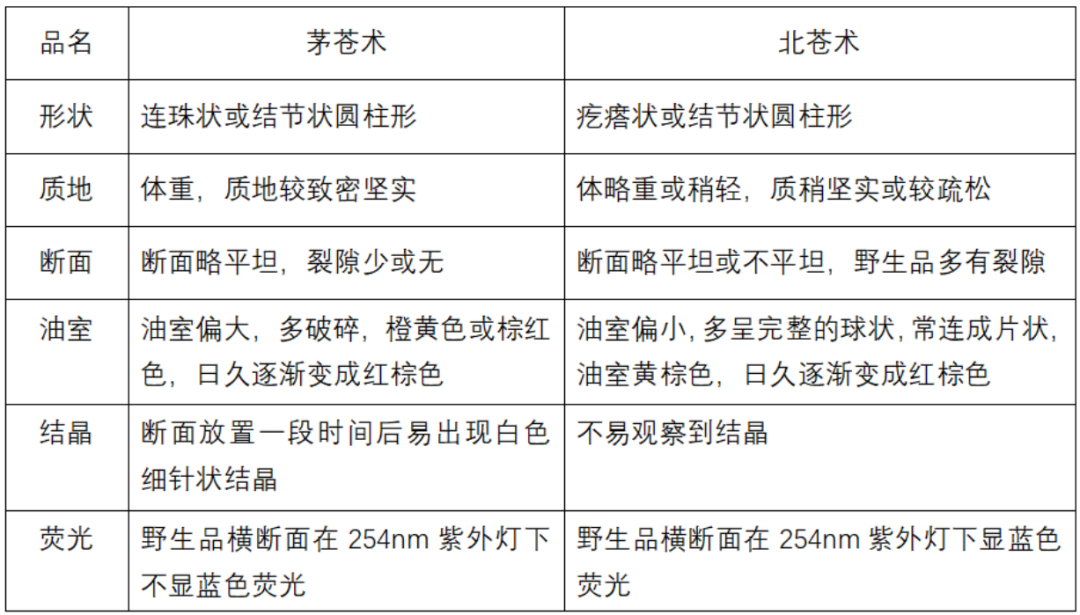


Cang Zhu Slices


Cang Zhu is used medicinally from its rhizome. The rhizome is nodule-shaped and cylindrical, about the size of an adult’s index finger, with a dark brown surface. When the outer skin is removed, it is yellow-brown. The cross-section has scattered brown-yellow oil chambers, emitting a pleasant aroma.
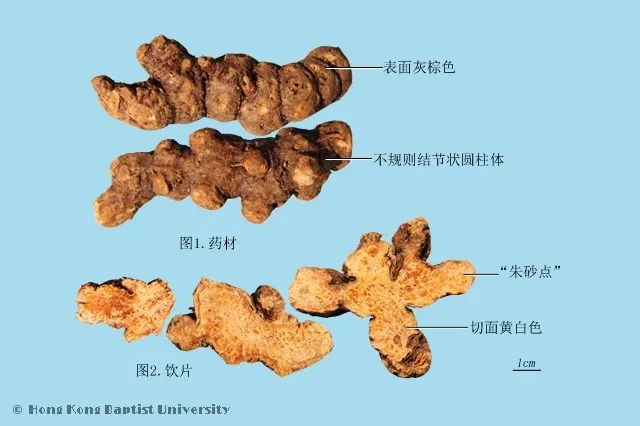
There are four commonly used processed varieties of Cang Zhu: Cang Zhu, Fu Chao Cang Zhu, Zhi Cang Zhu, and Jiao Cang Zhu.
Cang Zhu has a very strong aroma due to its high volatile oil content. The volatile oil of Cang Zhu is a complex compound, and its efficacy comes from the volatile oil. However, excessive volatile oil can be harmful to the body, which is referred to as “drying nature” in TCM. Experiments have confirmed that excessive volatile oil from Cang Zhu can cause respiratory depression in mice. Therefore, Cang Zhu must be processed before use, such as soaking it in rice washing water for a day and night, then drying it, known as “Pao Zhu”; or stir-frying it with wheat bran, cooling it, and then sifting out the bran, known as “Fu Chao Cang Zhu”. This processing method is recorded in the 2020 edition of the “Chinese Pharmacopoeia”; there is also the method of directly stir-frying it until charred, known as “Jiao Cang Zhu”. The purpose of these processes is to reduce the volatile oil content, thereby alleviating the “drying nature” and allowing Cang Zhu to exert its medicinal effects more effectively.
Raw Cang Zhu is warm, drying, and pungent, with strong damp-drying, wind-dispelling, and cold-dispersing effects. It is used for wind-damp bi pain, numbness of the skin, pain in the knees and feet, wind-cold common cold, body pain, damp-heat, and joint soreness.
Zhi Cang Zhu has similar effects to raw Cang Zhu. The “Bencao Gangmu” mentions that “Cang Zhu is drying, so it is soaked in glutinous rice wash to remove its oil,” indicating that the volatile oil is reduced after processing, which can alleviate the drying nature of Cang Zhu, consistent with modern views. Soaking in rice wash water can mitigate the pungent and drying side effects of Cang Zhu and has a harmonizing effect on the stomach.
Fu Chao Cang Zhu has reduced pungency, alleviated drying nature, and a fragrant aroma, enhancing its spleen and stomach strengthening effects. Studies have found that after stir-frying Cang Zhu with wheat bran, the contents of Atractylon, β-eucalyptol, and Cangzhu ketone significantly decrease, which may be an important reason for the enhanced damp-drying and spleen-strengthening effects of Fu Chao Cang Zhu. Therefore, Fu Chao Cang Zhu is often used for spleen and stomach disharmony, phlegm retention, abdominal fullness, night blindness, and visual impairment.
Jiao Cang Zhu significantly reduces its pungent nature after stir-frying until charred, and its medicinal effects change in that its drying nature is alleviated, enhancing its spleen-strengthening and anti-inflammatory effects. Therefore, Jiao Cang Zhu is primarily used for solidifying the intestines and stopping diarrhea, suitable for spleen deficiency diarrhea, chronic dysentery, or women’s leucorrhea.
Currently, the commonly used varieties in pharmacies are Cang Zhu and Fu Chao Cang Zhu:
Raw Cang Zhu: has strong damp-drying and wind-dispelling effects.
Fu Chao Cang Zhu: has stronger spleen and stomach harmonizing effects.


Cang Zhu’s Clinical Applications



Cang Zhu has a pungent, bitter, and warm nature, and it enters the spleen, stomach, and liver meridians. It dries dampness, strengthens the spleen, dispels wind-dampness, and improves vision. Modern pharmacological studies have shown that its volatile oil can counteract intestinal spasms caused by the parasympathetic neurotransmitter acetylcholine; Cang Zhu preparations can also counteract intestinal muscle relaxation caused by the sympathetic neurotransmitter adrenaline; Atractylon can promote gastrointestinal motility; Cang Zhu decoction has blood sugar-lowering, sodium excretion, and potassium excretion effects; its vitamin A-like substances can treat night blindness and corneal softening.
Ancient people believed that burning Cang Zhu could “ward off filth”. In the TV drama “Zhen Huan Zhuan”, there is a scene where during a plague in the capital, various palaces were allocated some Cang Zhu and mugwort to burn. The pregnant noblewoman Fu Cha bullied An Lingrong, not only taking away the Cang Zhu and mugwort that An Lingrong was entitled to, but also mocking her.
Plagues were considered natural disasters in ancient times, but modern research has proven they are caused by viruses or bacteria. Experiments have been conducted in operating rooms where the bacterial count per unit area was tested, then the operating room was closed, and Cang Zhu was burned. Afterward, the bacterial count was retested, and it was found that the number of bacteria had indeed decreased significantly. This shows that burning Cang Zhu does have a bactericidal effect. In recent years, it has become popular to wear herbal sachets during the Dragon Boat Festival, which are said to have mosquito-repelling effects, made by crushing Cang Zhu, Wu Zhu Yu, mugwort, and other herbs into cloth bags. Different regions have different formulas for the sachets, but Cang Zhu and mugwort are essential ingredients.
In recent years, during the global COVID-19 pandemic, herbal sachets for warding off filth have also become very popular.
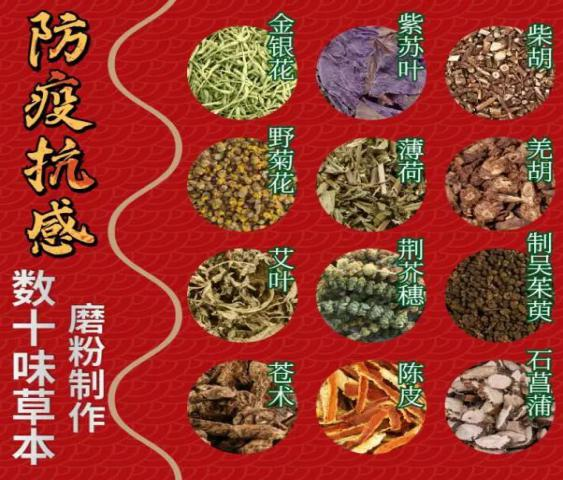
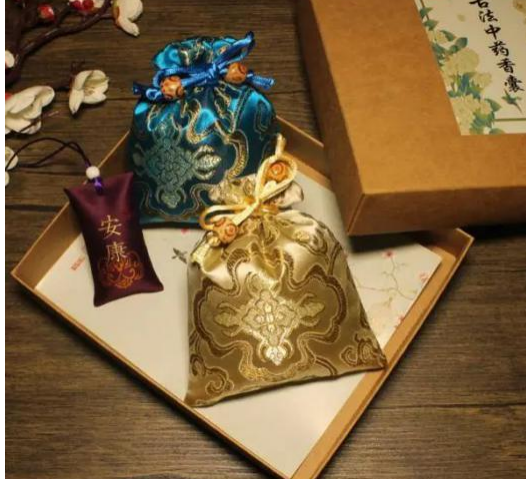
Cang Zhu, in appropriate proportions with Huo Xiang and Fu Ling, has also been made into tea bags to strengthen the spleen, eliminate dampness, and freshen breath.
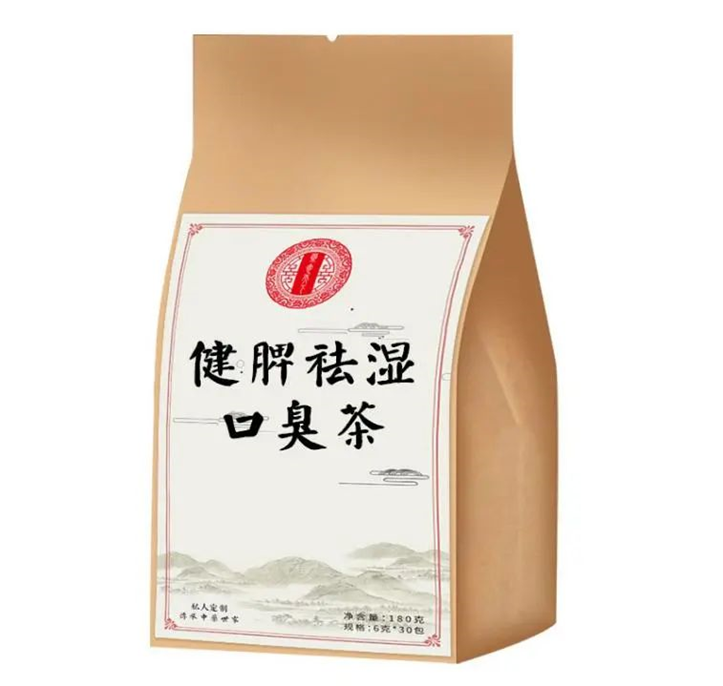


Recommended Dietary Therapy


Cang Zhu Stewed with Beef Liver
[Ingredients]: Cang Zhu 10g, Beef Liver 100g;
[Method]: Place Cang Zhu in a clay pot, add 1.5 bowls of water, and boil until reduced to half a bowl of water, then add the beef liver (cut into pieces) and cook for about 5 minutes.
[Usage]: Drink the soup and eat the meat.
[Function]: Nourishes the liver and improves vision.
Pork Liver Tofu Wraps
[Ingredients]: Pork liver, pork, walnut kernels, pine nuts, black fungus, dried shrimp, pork, scallops, tofu, Cang Zhu.
[Method]:
(1) Chop the pork, walnut kernels, pine nuts, black fungus, dried shrimp, pork, and scallops into a filling;
(2) Hollow out the tofu and stuff the prepared filling into it;
(3) Steam the stuffed tofu until cooked;
(4) Cook the pork liver with Cang Zhu until the liver is cooked;
(5) Slice the cooked pork liver and serve with the tofu.
[Function]: Cang Zhu has the effect of improving vision. Cooking it with pork liver can enhance the vision benefits of the liver. If pork liver is replaced with lamb liver, the therapeutic effect of this dish will be even better. Additionally, the combination of pork liver and tofu is also very beneficial for the liver.


Cang Zhu’s Contraindications


1. Contraindicated for those with yin deficiency and internal heat, and those with qi deficiency and excessive sweating.
2. Avoid using with Fang Feng and Di Yu.
3. Avoid peaches, plums, sparrow meat, mustard greens, and green fish.
4. Use with caution for those with blood deficiency and weakness, as it may consume qi and blood, dry body fluids, and worsen symptoms of internal heat and fullness.
5. Avoid for conditions characterized by yin deficiency, blood deficiency, insufficient essence, internal heat, bone steaming, dry mouth and lips, coughing with phlegm, vomiting blood, nosebleeds, throat obstruction, and constipation; do not use if there is liver or kidney qi stagnation.


[Images sourced from the internet, infringement will be deleted]
Author: Wang Yan
Reviewed by: Zhang Xinrong

Pharmacy Window · Previous Issues
Pharmacy Window 37 || A Review of Digestive Aids Related to Digestive Enzymes
Pharmacy Window 36 || A Bowl of Sour Plum Soup to Help You Enjoy Summer
Pharmacy Window 35 || Focus on Spleen and Stomach Health, Pharmacists Are Here for You
Hospital Address: 389 Zhongshan Road, Shijiazhuang
Transportation Route: Take bus routes 1, 5, 28, 41, 42, 60, 116 and get off at “Provincial Hospital” station. The subway line 1, get off at the Sports Center station and walk east for 200 meters to reach.
Customer Service Phone: 0311—69095114
West Campus Address: 32 Xisan Zhuang Street, Shijiazhuang
Transportation Route: Take bus routes 111, 29 and get off at the West Campus of the Provincial Hospital (West Entrance of Zhongwang Road). The subway line 3, get off at Xisan Zhuang station and walk south for 1 kilometer to reach.
Customer Service Phone: 0311—69095400



